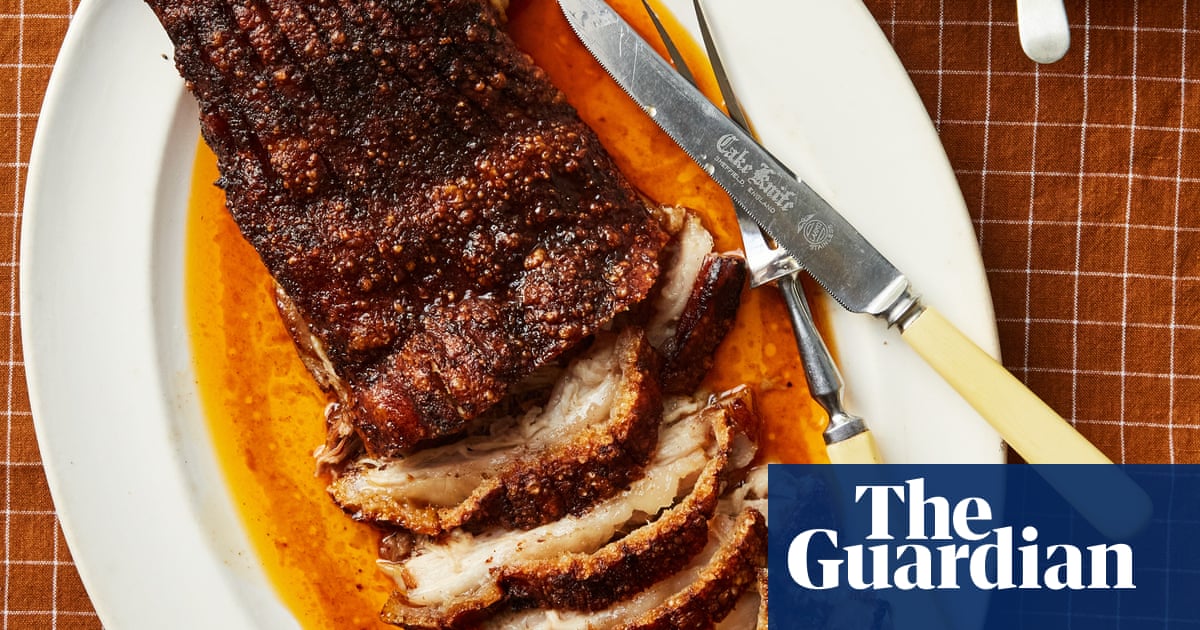There’s something about its perfect balance of crunch and tenderness that makes roast pork belly such a timeless favourite, and slow-roasting fills the kitchen with comforting aromas that make you hungry long before the meat is anywhere near ready. I like to serve it withmojo verde, a vibrant sauce from the Canaries that’s often served withpapas arrugadas, the island’s wonderfully salty and wrinkled take on potatoes. The sauce’s fresh, herby flavour works beautifully with roast meat, too, and brings a bright contrast to rich, crisp pork in particular.
Prep15 minCook3 hr 30 minServes4-6
1½kg pork belly(ideally outdoor-reared), skin scored2 tbsp olive oil2 tsp sweet smoked pimentónSalt andblack pepper2 tbsp honey200ml dry sherry150mlchicken stockZest of 1 lemon, pared off in strips
For the mojo verde1 bunch spring onions, trimmed and finely chopped1 garlic clove, peeled and grated1 green chilli, stalk, pith and seeds discarded, flesh finely chopped100gfresh coriander, finely chopped50g fresh flat-leaf parsley, finely chopped2 tbsp sherry vinegar120ml extra-virgin olive oil
Heat the oven to 220C (200C fan)/425F/gas 7. Rub the pork belly all over with the olive oil, pimentón and some salt, ensuring they all get right into the scores, then put it in an oven tray and roast for 30 minutes.
Turn down the oven to 160C (140C fan)/325F/gas 3. Mix the honey, sherry and stock in a small bowl or jug, add the lemon zest, then pour around the pork in the tray. Cover tightly with foil and roast for a further two and a half hours.
When the time is up, take off the foil lid, turn the heat back up to 220C (200C fan)/425F/gas 7, and cook for a final 20 minutes, to crisp up the crackling. Remove and leave to rest for at least 10 minutes before carving.
While the pork is finishing off cooking, make the mojo verde. Put the spring onions, garlic, chilli, coriander, parsley, sherry vinegar and oil in a blender, pulse to a rough paste, then season to taste.
Slice the pork belly and serve with any pan juices and the mojo verde drizzled over the top.
